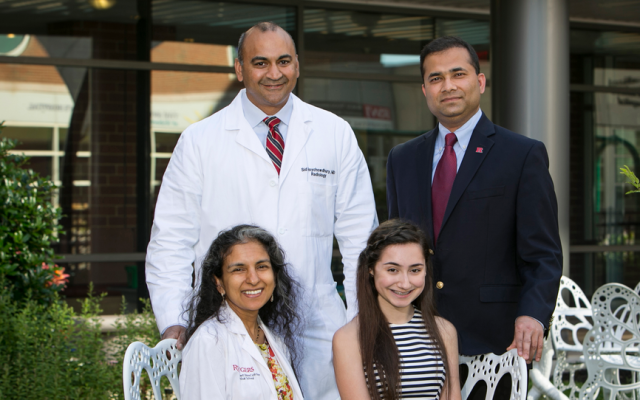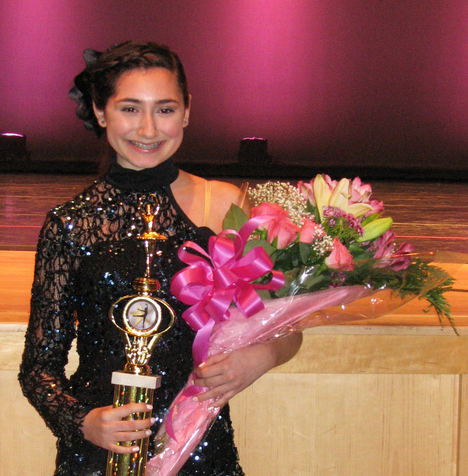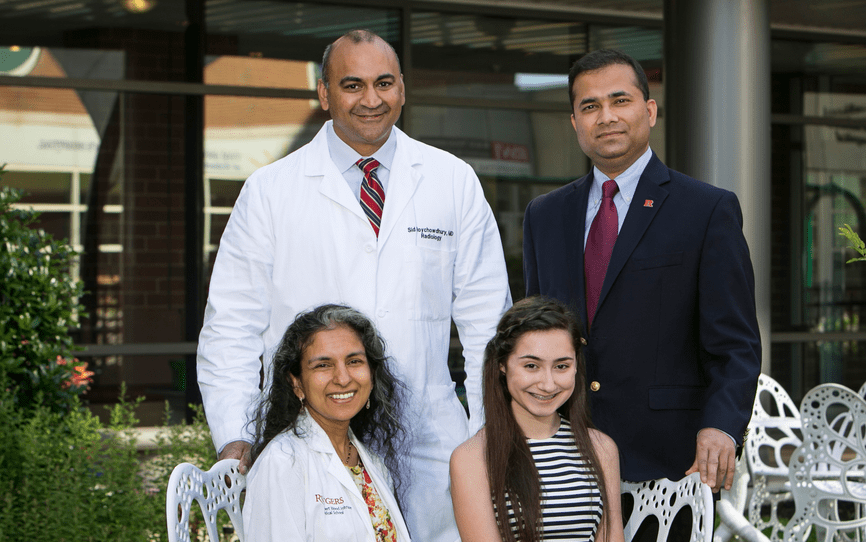BTN.com staff, October 1, 2015
Last year, 13-year-old Christina Blumstein had just returned home with her parents to their home in Old Bridge, N.J., following a summer trip to Long Island when something went horribly wrong. Though she?d felt fine moments before, she was hit with a sudden, intense pain.
?Christina started screaming that somebody was stabbing her in the head with a knife,? her mother, MaryAnn Blumstein, said.
Moments later, the girl slid into a coma caused by a massive stroke. An ambulance arrived shortly after that to rush her to the Robert Wood Johnson University Hospital for emergency treatment.
[btn-post-package]?Christina was very ill and we didn't know exactly why when she first came to the hospital,? explained Dr. Rachana Tyagi, pediatric neurosurgeon and an assistant professor of surgery at Rutgers' Robert Wood Johnson Medical School. ?We had to triage and reduce the risk of more bleeding to the skull, and accept the risk that this might also progress and cause more damage.?
Tyagi and other quick-thinking doctors there were able to save her life, but Christina emerged from surgery in a comatose state. Eventually, the medical staff at the hospital figured out that a clump of small, abnormal blood vessels she?d carried in her brain since birth caused this crisis. This rare condition - called an arteriovenous malformation, or AVM - occurs in just 18 people per 100,000, according to the American Medical Association.
Nine days later, Christina came out of her coma. Tyagi attributed her successful treatment to close observation and the skilled medical team around her at all times.
?I think you have to pay attention to the details, and really listen to the other team members and the patients,? Tyagi said. ?Mom would tell me if she thought Christina was a little worse, less responsive or more agitated, and we would look for possible causes and fix the problem. The family and the medical team worked together to save her. And, we saved her."

?For complex patients like this, it takes the whole village to care for them,? she added, ?starting with the EMTs stabilizing her on the way to the hospital, the nurses and technicians in the operating room, then the ICU doctors and nurses … After discharge from the hospital, the rehab physicians, nurses, physical, occupational and speech therapists - and of course, strong family support.?
Despite their joy at her return to consciousness, Christina and her family now faced a new challenge. Before this life-altering event, dancing had been one of her great passions. In fact, she?d even dreamed of pursuing a career as a dancer.
As a result, Christina needed to go beyond the standard physical rehab that people with this condition need to undergo in order to, say, figure out how to walk again. And doctors weren?t entirely sure that she?d ever make a comeback as a dance performer, no matter how hard she tried.
Still, both Christina and her doctors took on the challenge. It wasn?t easy, but thanks to their continued treatment, she went from wondering if she?d ever be able to dance again to winning awards for it less than a year after the stroke. This past June, she gave an emotional performance at a jazz dance recital that not only impressed the audience, but also won their hearts.

Stories like Christina?s give Tyagi a renewed sense of purpose.
?It helps me appreciate every day that my kids are healthy,? she said. ?You never know when something will happen. In a sense, it?s all in a day?s work because we care for many gravely ill patients. I always tell parents that I will care for their child like she was mine. And I did that for Christina. I become the ?third parent,? and I do everything in my power to make sure my kid does well.?
By Lenox Magee







